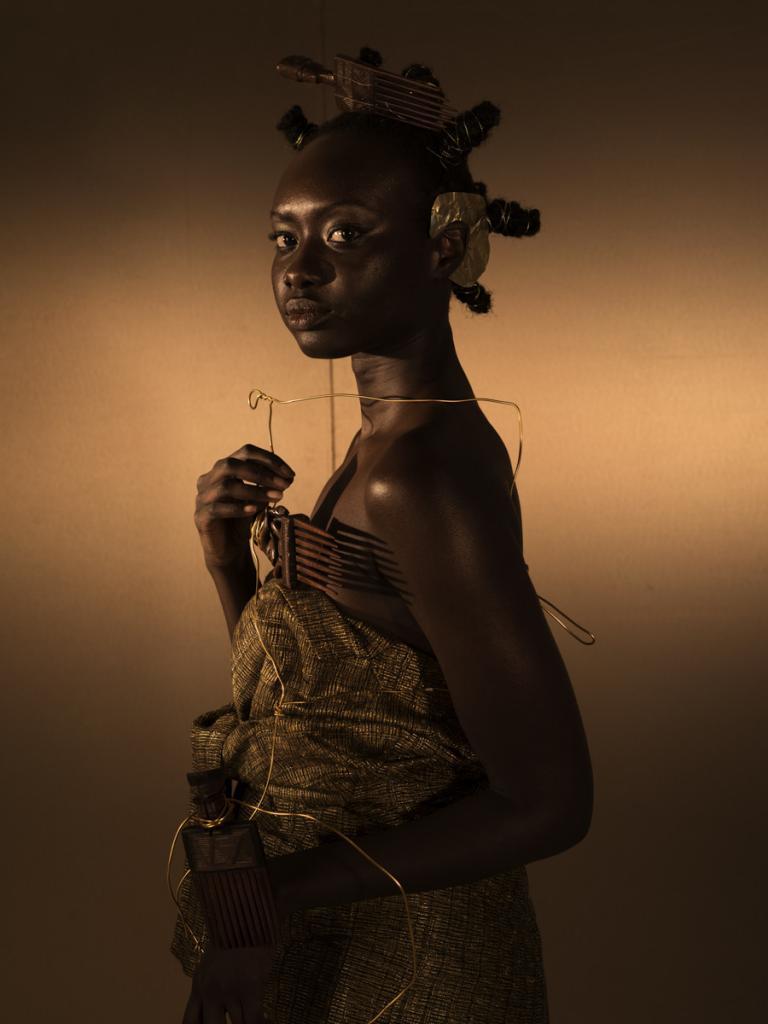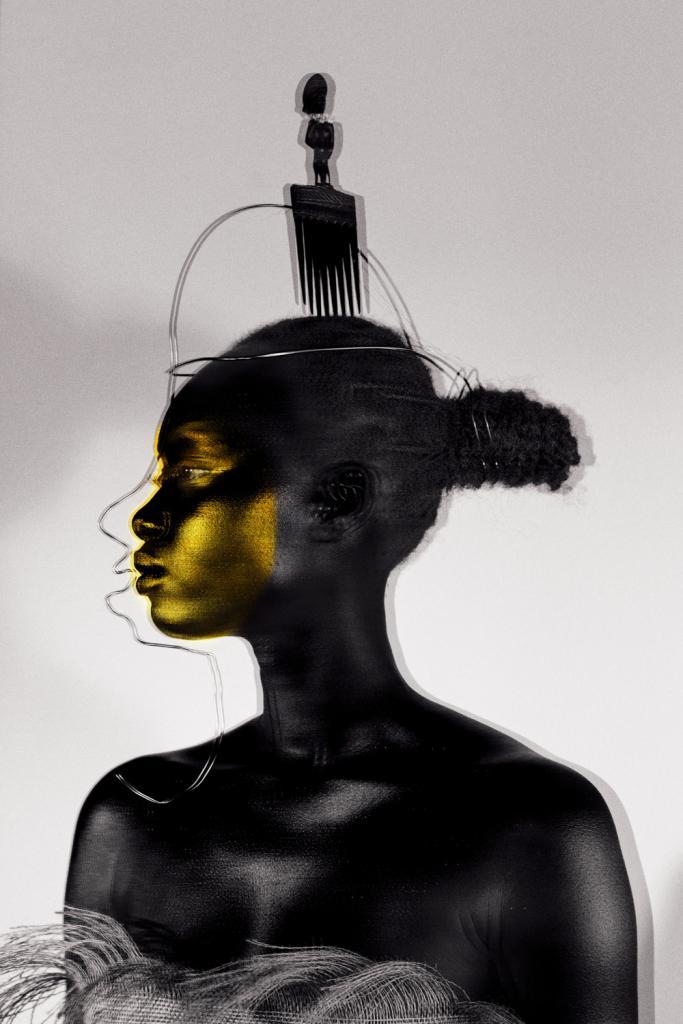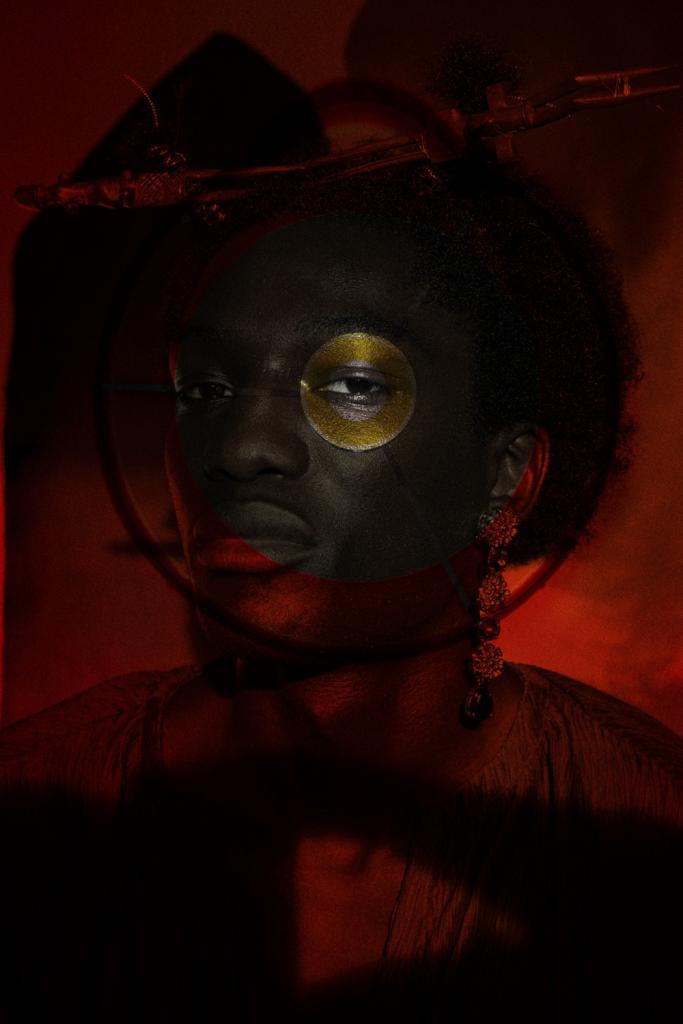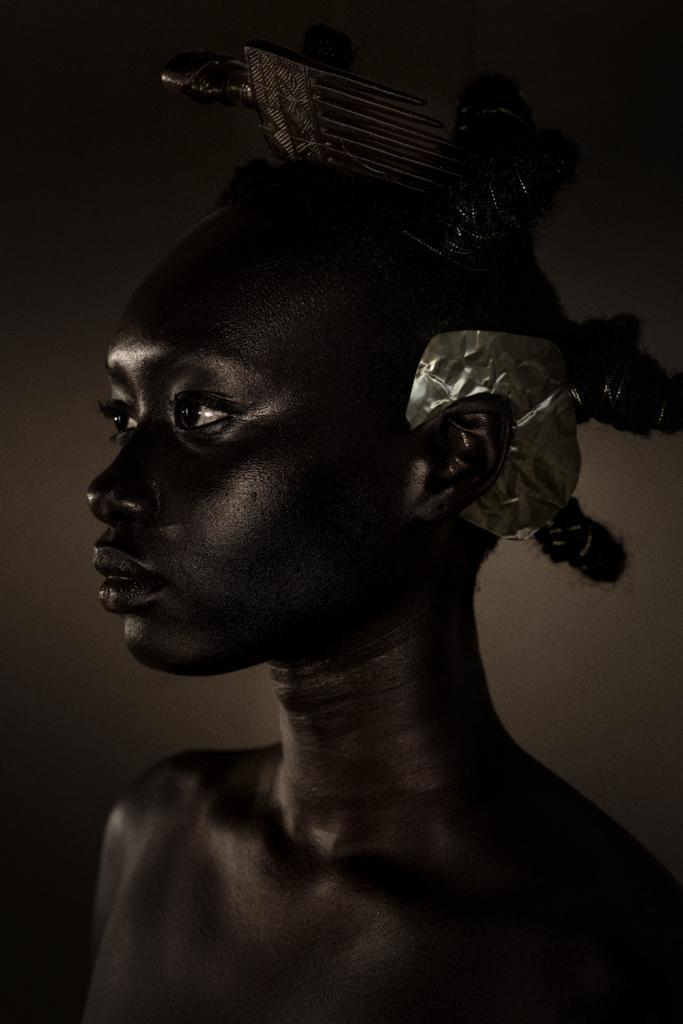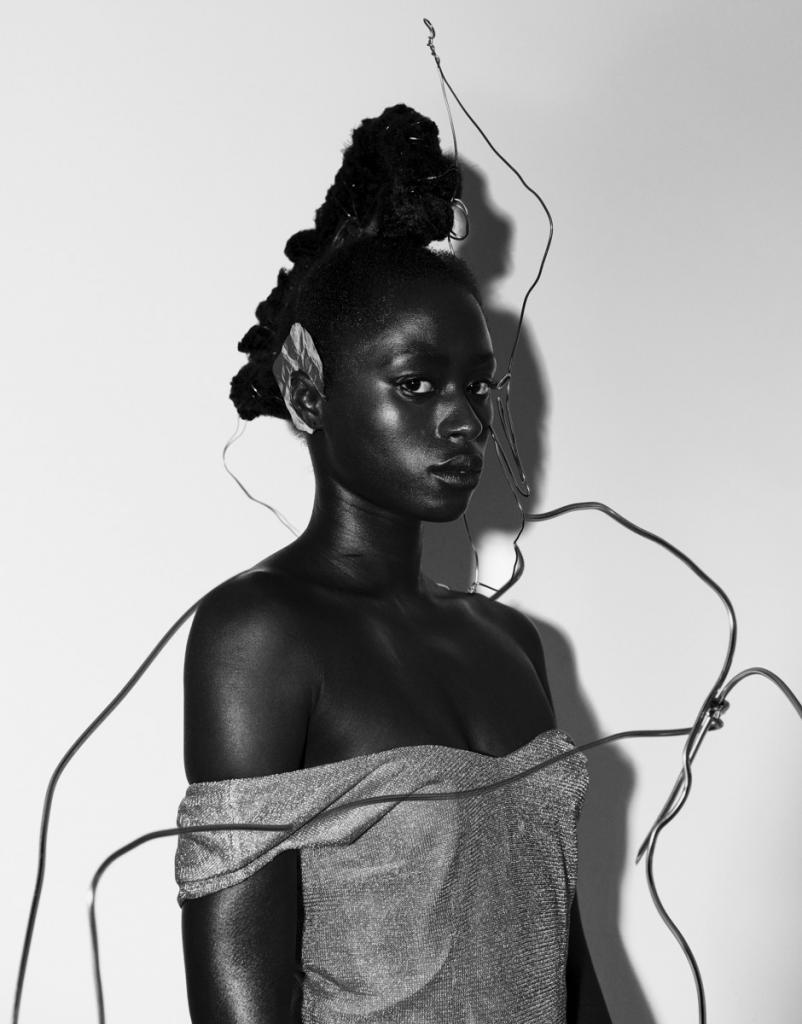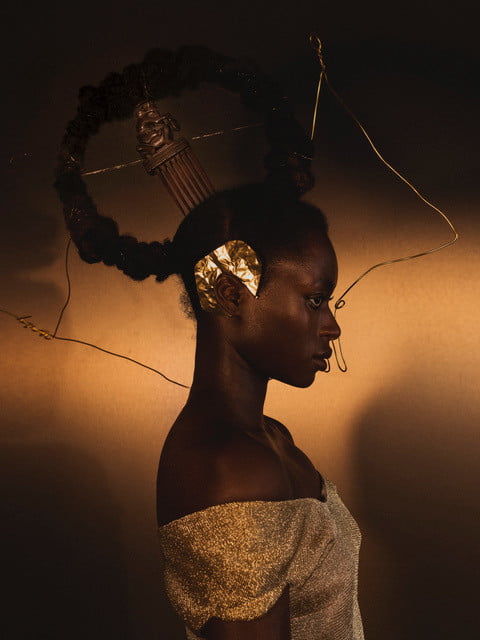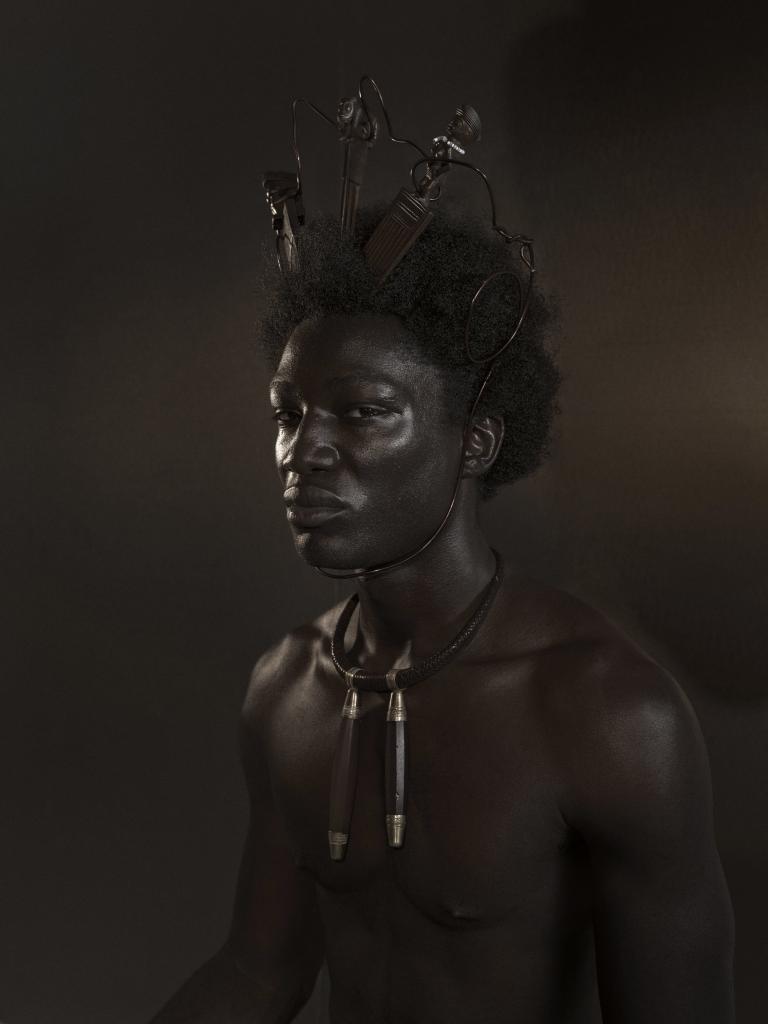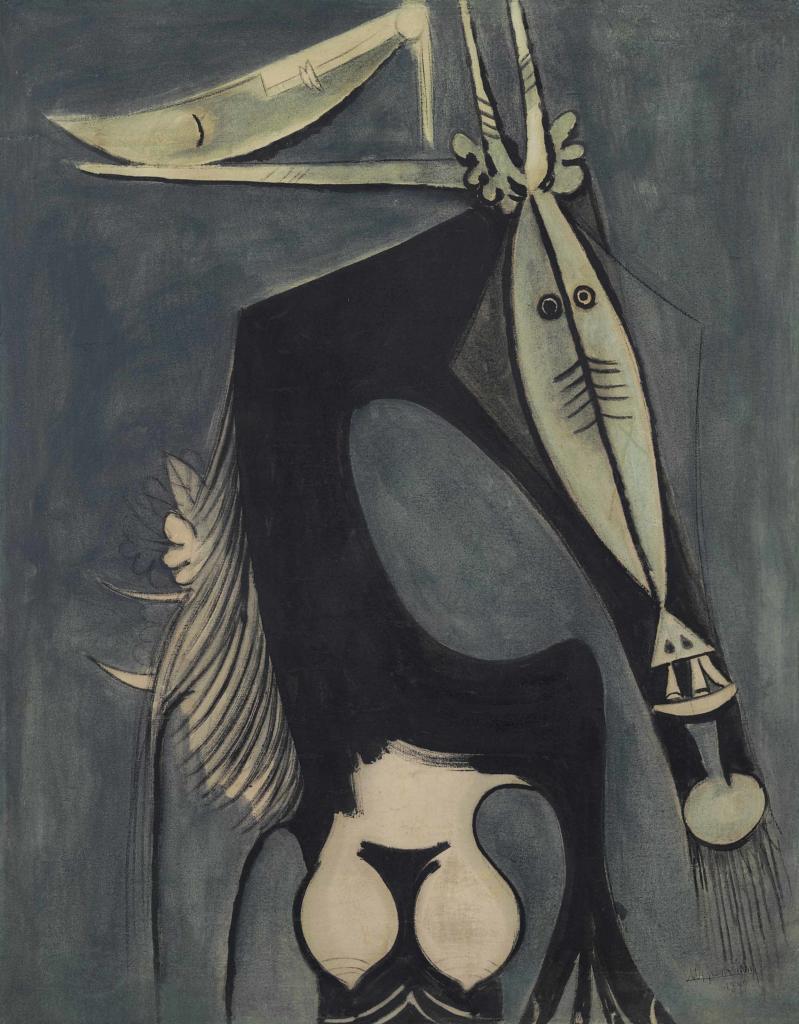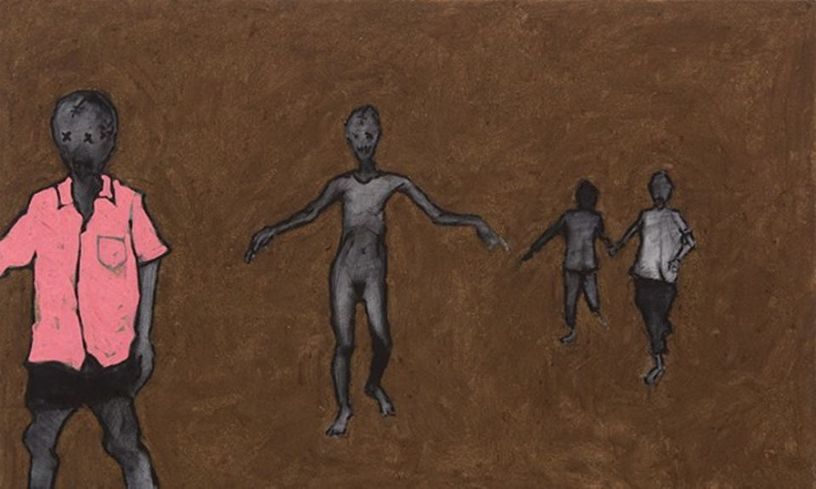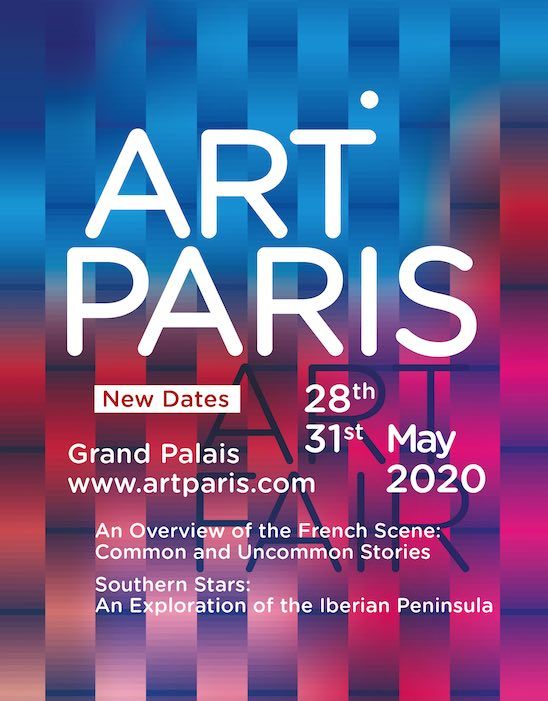Kisanola X Djeneba Aduayom

Ornate 19thcentury combs from the Democratic Republic of the Congo on loan from a renowned African art dealer. Art direction by the visionary curator of a young contemporary art gallery; photography by one of the rising stars she represents. Three models and one inspired winter day in a Paris studio.
These creative and material forces come together in “Kisanola by Djeneba Aduayom,” a riveting series of portraits, four of which debut this week at the Brafa Art Fair in Brussels. Black models with crowns of natural hair radiate a deep and knowing power: each is adorned with the combs and shiny gold objects, looking love-ready, battle-ready, ceremony-ready, world-ready. The images are ethereal, at once vintage, contemporary and futuristic.
The idea for the photo-series came from Brussels-based curator Marie Gomis-Trezise. She recently founded Galerie Number 8, which represents emerging artists whose work examines identity, representation and the human condition. While browsing at Brafa last year, she came across the vast collection of Didier Claes, owner of the eponymous gallery celebrated for its exquisite collection of African art. A revelation begat a vision.

“Beyond the skin 3” by Djeneba Aduayom Courtesy of the artist, Didier Claes Gallery & Galerie Number 8 
Kisanola “Beyond the skin 4” by Djeneba Aduayom Courtesy of the artist, Didier Claes Gallery & Galerie Number 8
“I had an aversion to African antiques because I associated them with the colonial grab in Africa and had seen them bastardized so often in popular culture,” Gomis-Trezise explains. “But when I saw Didier’s collection, I was stunned. The beauty and power of the objects is overwhelming.”
She knew immediately that she wanted to work with him on a series of images shot by a contemporary photographer, using traditional African art. She approached Claes, who loved the idea and proposed using combs from the DRC for the shoot.
“I couldn’t say no to this adventure. My personal collection also includes works by contemporary artists that meld seamlessly with the older pieces. I feel strongly that the mixing of ancient and contemporary art is logical and wise. It is a surprising combination that works perfectly.” Claes remembers.
For the shoot, Claes chose several combs in the Chokwe, Yaka, Luba and Lélé styles from Central Africa. The intricate carvings atop the combs reflect their prestige and the elaborate tastes and customs of the members of high society who used them. Carved from a single piece of wood, they feature decorative motifs, figurative themes and symbolism. For example, the number of teeth indicate the status of the society with which the comb is associated, and geometric incisions and engraved patterns carry coded messages.

DJENEBA ADUAYOM Black Gold I (2018), from the series “Kisanola” Chromaluxe semi-matte metal print 80x120cm – Ed 4 Courtesy of the artist, Didier Claes Gallery & Galerie Number 8 
DJENEBA ADUAYOM Black Gold 4 (2018), from the series “Kisanola” Chromaluxe semi-matte metal print 80x120cm – Ed 4 Courtesy of the artist, Didier Claes Gallery & Galerie Number 8
“Kisanola by Djeneba Aduayom” celebrates the combs as instruments in the keeping of those cherished exchanges and of the culture hair upholds.
The choice of combs for the shoot – as opposed to masks or other traditional African objects – was significant. In many African societies, the doing of hair is highly important and involves an intimate exchange between the stylist and the styled. And the hairstyle itself is as much about beauty as it is about identity, culture and status. “Kisanola by Djeneba Aduayom” celebrates the combs as instruments in the keeping of those cherished exchanges and of the culture hair upholds.
“My vision was to create something sculptural and modern using these amazing artefacts. I was inspired by the details in the wood figures. The combs are part of a rich, ancient cultural tradition and I wanted to add a modern twist to the mix.” Djenaba Aduayom
The photostory takes its name from kisanola, the Lingala word for comb, and its French-Togolese photographer, Djeneba Aduayom. A former dancer, Aduayom’s photographs maximize the expressive power and beauty of the human figure. For Kisanola, her eye for mood and grandeur defines each image. Aduayom recalls, “My vision was to create something sculptural and modern using these amazing artefacts. I was inspired by the details in the wood figures. The combs are part of a rich, ancient cultural tradition and I wanted to add a modern twist to the mix.”

It was Aduayom who introduced the metal wire to the models’ styling “to create simple structures with the hair and combs, securing the combs, but also creating a ‘sculptural cage’ for them,” she said. “The metal adds shine and sophistication because gold is by nature associated with prestige, elegance, something of value.” She also liked the contrast created by the wood of the combs and the metal.
“For me personally though, the project became a kind of reconciliation with African antiques.” Marie Gomis-Trezise
Aduayom has always had a very personal and contextual relationship to African artefacts that shows in the honorific way she incorporated them into the portraits. She grew up surrounded by her mother’s extensive collection of African objects and knew intimately the history, provenance and significance of each. “African objects are a part of my heritage,” she says.
For Gomis-Trezise that emotional connection was forged in producing the shoot. “The idea was to make something beautiful, a sort of rediscovery and reconsideration of things that have always been around us,” she said. “For me personally though, the project became a kind of reconciliation with African antiques. It gave me a chance to interact with their beauty and culture and appreciate up close how important they are and how crucial it is to protect them, even return them to Africa.”

Kisanola “Beyond the skin 1” by Djeneba Aduayom Courtesy of the artist, Didier Claes Gallery & Galerie Number 8 
DJENEBA ADUAYOM Black Gold 2 (2018), from the series “Kisanola” Chromaluxe semi-matte metal print 80x120cm – Ed 4 Courtesy of the artist, Didier Claes Gallery & Galerie Number 8
Although all parties to the collaboration set out foremost to make something beautiful, they have given us far more than that. Kisanola is an artistic testament to the timelessness and staying power of a people and a culture. As Claes notes: “Although African art was established years ago, it continues to inspire us.”

